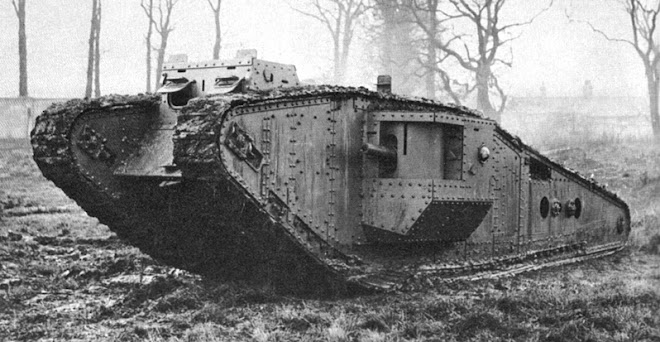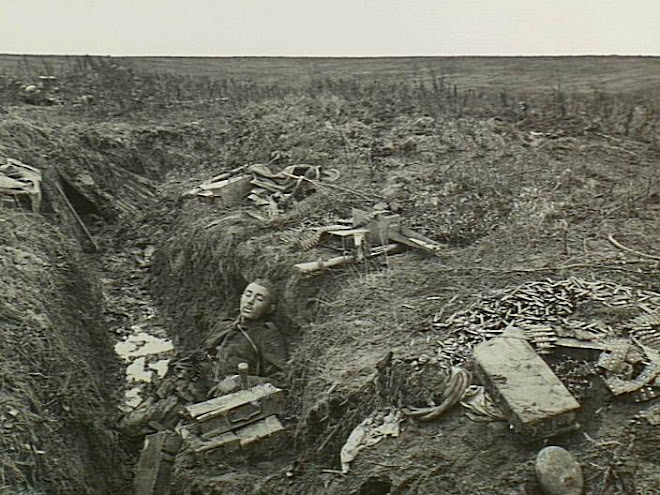Wednesday, October 24, 2007
Battle Orders- The Schlieffen Plan
The Schlieffen Plan was created by Schlieffen to defeat both the French and the Soviets simultaneously on two different fronts. The plan was to have an all out offense directed at the French to which they could quickly overwhelm them and then turn to the USSR before they could garner troops. It was a brilliant plan that closely resembles the the tactics of Hannibal. Many believe that if the original plan had been followed then the war would have turned out differently. At Helmuth Von Moltke' rise to power as the German chief of staff. Moltke decided that the Schlieffen plan was inadequate and tactless and so changed the plan to lessen the great hammerhead of troops directed at the western front, causing the troops to not be strong enough for an easy victory. Which resulted in the German's failure in the war.
Battle Field Orders- The Red Baron

World War I was a bloody war, fought in muddy trenches and overwhelmed with slaughter. Yet a few soldiers escaped this anonymous end - fighter pilots. They volunteered to fly when just going up in an airplane seemed heroic. However, most fighter pilots achieved only a few victories before they too were shot down.
Yet, there was one man, Baron Manfred von Richthofen, who liked to fly in a blazing red airplane and shot down plane after plane. His achievements made him both a hero and a propaganda tool. With 80 credited victories, Baron Manfred von Richthofen, the "Red Baron," defied the odds and became a legend in the air.
Von Richthofen was killed just after 11 a.m. on 21 April 1918, while flying over Morlancourt Ridge, near the Somme River. While pursuing a Canadian pilot Richthofen was hit by a single .303 bullet that caused such severe damage to his heart and lungs resulting in his speedy death. Before dying he managed to make a hasty but controlled landing in a field on a hill near the Bray-Corbie road, just north of the village of Vaux-sur-Somme, in a sector controlled by the Australian Imperial Force.
http://en.wikipedia.org/wiki/Manfred_von_Richthofen
Battle Field Orders- Chemical Warfare

During the WWI, there was a major military innovation. Chemicals were a part of that innovation. The gases ranged from disabling chemicals, such as; tear gas, mustard gas, to lethal agents like phosgene. Chemical warfare was a major component of the Great war; although the death rate was about 4% compared to combat deaths it was still the most feared way to die by the soldiers. Due to the widespread use of chemical warfare, and of the ability to create counter measures, its overall effectiveness was diminished
Battle Field Orders-No Mans Land
Battle Feild Orders- WWI Weapons
In WWI there were many weapons deployed that had never been used before, these weapons changed war itself; how war came about and how it was fought.
One of them is the flamethrower or the German name(Flammenwerferapparate). It was not until 1911 that the German army accepted the flamethrower, creating a specialist regiment of twelve companies equipped with them. It was a fearsome and destructive weapon but it had its drawbacks; it was cumbersome and difficult to operate, and it was only effective at very close range, not common in the trenches in WWI. But it was still used throughout the war.
The Tank: in WWI the first tanks were used by the British, of the allies only the British used the tanks and the Germans created only 15 of them by the end of the war. there are many advantages to having a tank, you can cross all trenches no matter the defense. This affected how war is waged because it eliminated the need for trenches and trench warfare.
The Machine Gun: the machine was a terrible weapon, it could spray a field with bullets in seconds and earned a fearsome reputation. During the time of WWI many new inventions never seen before came about, for example; the machine gun mounted on an airplane (the airplane took on a new meaning and use after that), and many smaller lighter automatic weapons were also invented.
The Sub: the sub was an effective and deadly way to kill ships; the German subs (U-boats) at the beginning of the war destroyed multiple ships without warning and continued to do so until politic interfered, had the US not put pressure on Germany, Germany probably would have won the war due to the allies having no reinforcements and supplies. The sub changed the way of naval combat forever, due to their effectiveness they were by WWII being created in all major countries.
Three major roles were defined for aircraft during the First World War: reconnaissance, bombing and fighting. Airplanes were used first for aerial scouts—spying on the enemy from the air and learning their secrets. At first the scouts ignored their enemy numbers, then began shooting at them with rifles and eventually with machine guns. Soon they began dropping hand grenades from their planes. Promptly an aircraft was designed for each need: reconnaissance planes some armed for defense; fighter planes, exclusively designed for shooting down other planes; and bombers carried more immense loads of explosives. Much of what we know and learn today about war birds came from the fundamental experiences of the pilots of the First World War.
3" Mortar: the mortar gun was essentially a bomber, it was pointed at a 45 degree angle and could fire 22 rounds a minute, the bombs were extremely destructive and effective and so therefore they were widely used and many newer and better creations came from it changing warfare once again. Because they were so effective they were added onto tanks, planes, and put in trenches (lighter models).
One of them is the flamethrower or the German name(Flammenwerferapparate). It was not until 1911 that the German army accepted the flamethrower, creating a specialist regiment of twelve companies equipped with them. It was a fearsome and destructive weapon but it had its drawbacks; it was cumbersome and difficult to operate, and it was only effective at very close range, not common in the trenches in WWI. But it was still used throughout the war.
The Tank: in WWI the first tanks were used by the British, of the allies only the British used the tanks and the Germans created only 15 of them by the end of the war. there are many advantages to having a tank, you can cross all trenches no matter the defense. This affected how war is waged because it eliminated the need for trenches and trench warfare.
The Machine Gun: the machine was a terrible weapon, it could spray a field with bullets in seconds and earned a fearsome reputation. During the time of WWI many new inventions never seen before came about, for example; the machine gun mounted on an airplane (the airplane took on a new meaning and use after that), and many smaller lighter automatic weapons were also invented.
The Sub: the sub was an effective and deadly way to kill ships; the German subs (U-boats) at the beginning of the war destroyed multiple ships without warning and continued to do so until politic interfered, had the US not put pressure on Germany, Germany probably would have won the war due to the allies having no reinforcements and supplies. The sub changed the way of naval combat forever, due to their effectiveness they were by WWII being created in all major countries.
Three major roles were defined for aircraft during the First World War: reconnaissance, bombing and fighting. Airplanes were used first for aerial scouts—spying on the enemy from the air and learning their secrets. At first the scouts ignored their enemy numbers, then began shooting at them with rifles and eventually with machine guns. Soon they began dropping hand grenades from their planes. Promptly an aircraft was designed for each need: reconnaissance planes some armed for defense; fighter planes, exclusively designed for shooting down other planes; and bombers carried more immense loads of explosives. Much of what we know and learn today about war birds came from the fundamental experiences of the pilots of the First World War.
3" Mortar: the mortar gun was essentially a bomber, it was pointed at a 45 degree angle and could fire 22 rounds a minute, the bombs were extremely destructive and effective and so therefore they were widely used and many newer and better creations came from it changing warfare once again. Because they were so effective they were added onto tanks, planes, and put in trenches (lighter models).
Subscribe to:
Posts (Atom)


